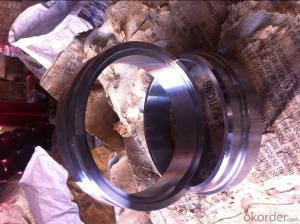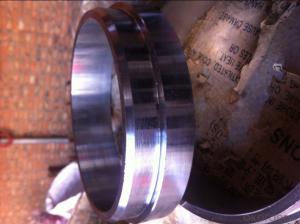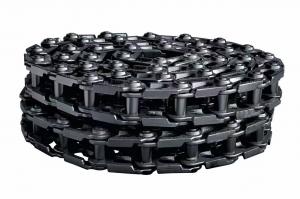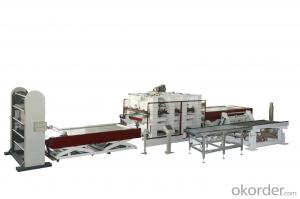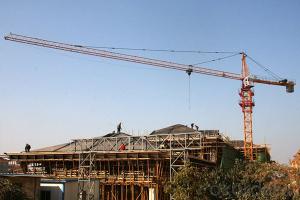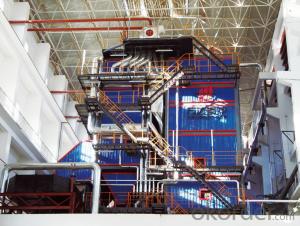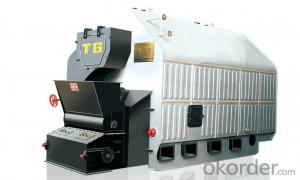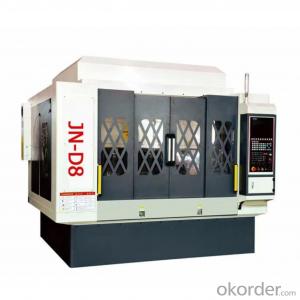SCHWING Single Side Flange DN125mm Width 35mm
- Loading Port:
- Tianjin
- Payment Terms:
- TT or LC
- Min Order Qty:
- 50 set
- Supply Capability:
- 5000 set/month
OKorder Service Pledge
OKorder Financial Service
You Might Also Like
Product Description:
Product Name: Concrete Pump Flange
1. Specification of Concrete Pump Flange
Materials: Steel 20
Inner Diameter: 125mm
Notes: total series of concrete pump elbows for different brand concrete pump(PUTZMEISTER, SCHWING, CIFA, SANY, ZOOMLION, IHI, KYOKUTO Etc)available from us.
2. Application of Concrete Pump Flange
Our concrete pump elbows have been successfully exported to many countries from 1998, Our main markets asbelow: Middle East, Southeast Asia, America, Brazil, Italy, Russia, South Africa etc
Aiming at the largest concrete pump parts manufacturer, and reliable, professional supplier in China, we can
supply concrete pump elbows, delivery pipes, casting or forging couplings, end rubber hoses, rubber pistons,
tungsten wear plates, delivery cylinders, and other hydraulic parts, one stop service for your concrete pump
parts and accessory business.
3. Package and Delivery of Concrete Pump Flange
Every 60pcs put in one seaworthy wooden box, and 20 boxes in one 20feet container.
Optional wood materials: veneer wood or other wood.
- Q:How often should a concrete pump wear plate be replaced?
- The replacement frequency of a concrete pump wear plate relies on various factors, such as the type and volume of concrete being pumped, as well as the pump's quality and maintenance. Nonetheless, it is advisable to regularly inspect the wear plate and evaluate its condition, particularly after each concrete pour. Typically, a concrete pump wear plate ought to be replaced once it displays significant wear or damage. Indications of wear can include excessive grooves, cracks, or holes on the plate's surface. Such issues can impact the pump's efficiency and performance, leading to reduced output and potential leaks. In situations where high-intensity pumping operations or abrasive materials are used, the wear plate may experience faster wear and require more frequent replacement. Conversely, if the pump is used infrequently or with less abrasive materials, the wear plate may last longer. It is crucial to note that regular maintenance and proper cleaning of the wear plate can extend its lifespan. This involves eliminating any hardened concrete residue and ensuring a smooth and clean surface. Additionally, lubricating the plate with suitable products can help reduce friction and wear. Ultimately, it is recommended to consult the manufacturer's guidelines and seek advice from experienced professionals to determine the optimal replacement schedule for a concrete pump wear plate, taking into account the specific conditions and usage of the pump.
- Q:Can concrete pump spare parts be heat-treated or hardened for increased durability?
- Concrete pump spare parts can undergo heat treatment or hardening to increase their durability. By subjecting the parts to controlled heating and cooling processes, their mechanical properties can be altered. This alteration significantly improves their hardness, strength, and wear resistance, thus enhancing their durability and ability to withstand harsh operating conditions. Various heat treatment methods, such as quenching and tempering, induction hardening, and case hardening, can be applied to different types of spare parts, including cylinders, pistons, wear plates, and delivery pipes. These processes contribute to the overall performance and lifespan of the spare parts, ensuring their ability to withstand the demanding nature of concrete pumping operations.
- Q:What are the indications of a damaged concrete pump boom?
- There are several indications that can point to a damaged concrete pump boom. These indications can include: 1. Visual damage: One of the most obvious signs of a damaged concrete pump boom is visible physical damage. This can include cracks, dents, or deformities in the boom structure. Any signs of structural damage should be taken seriously as they can compromise the integrity of the boom. 2. Leaks: Another indication of a damaged boom is the presence of leaks. If you notice hydraulic fluid or water leaking from the boom, it could be a sign of a damaged hose or fitting. Leaks can not only affect the performance of the pump but also pose a safety risk to the operator and those working around the equipment. 3. Misalignment: A damaged boom may also exhibit misalignment issues. If the boom is not straight or appears to be bent at an odd angle, it could indicate damage. Misalignment can affect the accuracy and efficiency of concrete placement, potentially leading to uneven or improper pouring. 4. Unusual noises: Strange or excessive noises during operation can be a sign of a damaged boom. Rattling, grinding, or squealing sounds can indicate loose or worn-out components, such as pins, bushings, or bearings. These noises should not be ignored, as they could worsen if not addressed promptly. 5. Reduced performance: A damaged boom may also result in reduced performance. If you notice a decrease in pumping capacity or difficulties in controlling the boom's movement, it could be an indication of damage. Poor performance can be caused by various issues, including hydraulic system problems, structural damage, or worn-out parts. In conclusion, it is crucial to regularly inspect and maintain concrete pump booms to identify any indications of damage. Promptly addressing these issues is essential to ensure the safety of operators, prevent further damage, and maintain the efficiency and performance of the equipment.
- Q:Can concrete pump spare parts be inspected for dimensional accuracy before installation?
- Yes, concrete pump spare parts can be inspected for dimensional accuracy before installation. Before installing any spare parts, it is important to ensure that they meet the required specifications and dimensions to ensure proper functioning and compatibility with the concrete pump system. Inspection can be done using various methods such as visual inspection, measuring with precision instruments, and comparing the dimensions with the manufacturer's specifications. This process helps to identify any discrepancies or deviations in the dimensions of the spare parts, allowing for adjustments or replacement if necessary. Inspecting spare parts for dimensional accuracy before installation helps to ensure the smooth operation and longevity of the concrete pump system.
- Q:What are the advantages of using ceramic components in concrete pump spare parts?
- There are several advantages of using ceramic components in concrete pump spare parts. Firstly, ceramic materials are known for their exceptional durability and wear resistance. Concrete pumps operate under high pressure and require components that can withstand the intense forces and abrasion. Ceramic parts have superior hardness and strength, making them highly resistant to wear and extending the lifespan of the spare parts. Secondly, ceramic components have excellent corrosion resistance. Concrete contains various chemicals and substances that can be corrosive to metals. By using ceramic parts, the risk of corrosion is significantly reduced, ensuring the longevity and reliability of the concrete pump spare parts. Additionally, ceramic materials have low friction coefficients. This means that when ceramic components are used in concrete pumps, there is less friction between the moving parts, resulting in reduced energy consumption and increased efficiency. This can lead to cost savings and improved overall performance of the concrete pump. Furthermore, ceramic parts have a high thermal resistance. Concrete pumps generate heat during operation, and this can cause damage or deformation to certain components. However, ceramic materials can withstand high temperatures without losing their structural integrity, ensuring the reliability and safety of the concrete pump. Lastly, ceramic components have excellent dimensional stability. They are less prone to expansion or contraction due to temperature changes, ensuring that the spare parts maintain their shape and fit accurately within the concrete pump. This precision fitting helps to minimize leakage and maintain the efficiency of the pump. In summary, the advantages of using ceramic components in concrete pump spare parts include exceptional durability, corrosion resistance, low friction, high thermal resistance, and dimensional stability. These benefits contribute to increased lifespan, improved performance, reduced maintenance costs, and enhanced overall efficiency of the concrete pump.
- Q:What are the indications of a faulty concrete pump hydraulic motor?
- Some indications of a faulty concrete pump hydraulic motor may include decreased pumping efficiency, irregular or inconsistent flow of concrete, unusual noises or vibrations, leaks or drips in the hydraulic system, excessive heat in the motor, or difficulty in starting or stopping the motor.
- Q:How often should concrete pump control panels be inspected and replaced?
- Concrete pump control panels should be inspected regularly to ensure they are functioning properly and to identify any potential issues or malfunctions. The frequency of inspections may vary depending on several factors such as the type of pump, the operating conditions, and the manufacturer's recommendations. However, a general guideline is to have a thorough inspection at least once every six months or after every 500 hours of operation, whichever comes first. During these inspections, trained professionals should check for any signs of wear or damage on the control panel components, including buttons, switches, indicators, and wiring. They should also verify the functionality of the control panel by testing all the different functions and safety features. In terms of replacement, it is essential to follow the manufacturer's guidelines and recommendations. Typically, control panels have a lifespan of several years, but this will depend on various factors such as the quality of the panel, frequency of use, and maintenance practices. If any significant issues or failures are identified during inspections, it is important to replace the control panel promptly to ensure the safe and efficient operation of the concrete pump. Ultimately, regular inspections and prompt replacement of control panels are crucial to minimize the risk of equipment failure, ensure safety on the construction site, and maintain the productivity and longevity of the concrete pump.
- Q:What are the key considerations when purchasing spare parts for a concrete pump?
- When purchasing spare parts for a concrete pump, there are several key considerations that need to be taken into account. These considerations include the compatibility of the spare parts with the specific make and model of the concrete pump, the quality and reliability of the spare parts, the availability of the spare parts, and the cost-effectiveness of the purchase. First and foremost, it is crucial to ensure that the spare parts being purchased are compatible with the concrete pump in question. Concrete pumps come in various makes and models, and each may have specific requirements in terms of spare parts. Therefore, it is essential to carefully match the specifications and requirements of the concrete pump with the spare parts being purchased to ensure proper functionality and performance. The quality and reliability of the spare parts are also vital considerations. Investing in high-quality spare parts can significantly impact the efficiency and longevity of the concrete pump. It is advisable to choose spare parts from reputable manufacturers or suppliers who have a proven track record of producing reliable products. Conducting thorough research and reading customer reviews can help in assessing the quality and reliability of the spare parts. Availability is another important factor to consider when purchasing spare parts for a concrete pump. It is essential to ensure that the spare parts needed are readily available, either from local suppliers or through efficient delivery channels. A delay in obtaining the necessary spare parts can lead to extended downtime and increased costs. Therefore, it is recommended to choose suppliers who have a reliable and efficient distribution network. Cost-effectiveness is also a key consideration when purchasing spare parts. While it is important to prioritize quality and reliability, it is equally important to find spare parts that offer good value for money. Comparing prices from different suppliers and considering the lifespan and potential maintenance costs of the spare parts can help in making a cost-effective decision. It is crucial to strike a balance between cost and quality to ensure the best return on investment. In conclusion, when purchasing spare parts for a concrete pump, it is important to consider compatibility, quality, availability, and cost-effectiveness. By carefully evaluating these key considerations, one can ensure that the spare parts chosen will meet the specific needs of the concrete pump, maintain its performance and reliability, and provide value for money.
- Q:What are the layout requirements of concrete pump for building engineering?
- The setting of concrete pump should be steady and firm, with heavy vehicle running condition
- Q:How often should concrete pump hydraulic filters be inspected and replaced?
- Regular inspection of the hydraulic filters for the concrete pump is recommended, preferably every three months. However, the inspection and replacement frequency may differ based on the concrete pump's specific conditions and usage. In cases where the pump is operated in harsh environments or extensively used, it may be necessary to conduct inspections and replacements more frequently. Close monitoring of the hydraulic filters' condition is crucial, and any signs of clogging, damage, or wear should prompt immediate replacement. Failure to adequately inspect and replace the filters as required can lead to reduced performance and efficiency of the concrete pump, as well as potential harm to the hydraulic system.
1. Manufacturer Overview |
|
|---|---|
| Location | |
| Year Established | |
| Annual Output Value | |
| Main Markets | |
| Company Certifications | |
2. Manufacturer Certificates |
|
|---|---|
| a) Certification Name | |
| Range | |
| Reference | |
| Validity Period | |
3. Manufacturer Capability |
|
|---|---|
| a)Trade Capacity | |
| Nearest Port | |
| Export Percentage | |
| No.of Employees in Trade Department | |
| Language Spoken: | |
| b)Factory Information | |
| Factory Size: | |
| No. of Production Lines | |
| Contract Manufacturing | |
| Product Price Range | |
Send your message to us
SCHWING Single Side Flange DN125mm Width 35mm
- Loading Port:
- Tianjin
- Payment Terms:
- TT or LC
- Min Order Qty:
- 50 set
- Supply Capability:
- 5000 set/month
OKorder Service Pledge
OKorder Financial Service
Similar products
New products
Hot products
Related keywords
